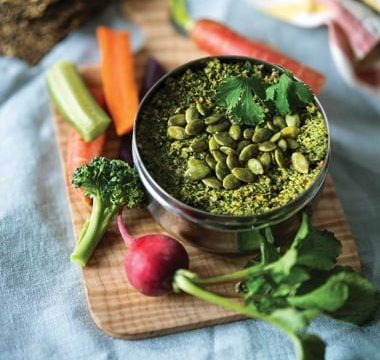The 36th chapter of Uttara Sthanam of Ashtanga Hridayam is named as ‘Sarpa Visha Pratishedha’. This chapter deals with the explanation of ‘Treatment of snake bite poison’.
The topics covered in this chapter include –
- Types of snakes
- Mandalina sarpa lakshana
- Rajimantha sarpa lakshana
- Gaudhera sarpa lakshana
- Vyantara sarpa lakshana
- Dashana Karana – Reasons for Biting
- Dashana Bheda – Kinds of Bite
- Poisons spread through blood
- Sarpangabhihata
- Shankavisha
- Signs of bite containing poison
- Darvikara Visha Vega – Stages of poisoning from bite by hooded snakes
- Mandali Vishavega – Stages of poisoning from bite by snake with patches
- Rajimanta Vishavega – Stages of poisoning from bite by snake with stripes
- Alpa Visha Sarpa – snakes with little quantity of poison
- Tyajya Damsha – Rejectable bites
- Sarpadasta Cikitsa – treatment of the person bitten by snake
- Signs of blood containing poison
- Bloodletting using horn or leech
- Cold application and bathing
- Cold therapies
- Hridayavarana – Protecting the heart
- Use of emetics
- Conditions for implementing special treatments in poisoning
- Treatment of Darvikara snake bite
- Treatment of person bitten by Krishna sarpa
- Agada for darvikara and rajimanta snake bite
- Agada for Mandali snake bite
- Himavan Agada
- Kashmaryadi Kashaya
- Astanga Agada
- Katukadi Yoga for Rajimanta snake poison
- Treatment for Kandachitra snake bite
- Sarvakarmika Agada
- Sitamarichadi Yoga
- Natadi Yoga
- Darvikara Visha Cikitsa
- Mandali Visha Cikitsa
- Ajimonta Visha Cikitsa
- Indications for mild treatment
- Vajra Churna Agada
- Bilvadi Gutika
- Reasons for removing the poisons completely
- Treatment of vitiated doshas after removal of poison
- Treatment of Sarpangabihata and Shankavisa
- Vishadharana – wearing poisonous herbs
- Precautions against snakes
Pledge by the author (s)
अथात: सर्पविषप्रतिषेधं व्याख्यास्याम: ।
इति ह स्माहुरात्रेयादयो महर्षय: ।
After having offered prayers to the God, henceforth we are going to explain the chapter pertaining to the explanation of ‘Treatment of snake bite poison’. Thus, say (pledge) Atreya and other sages.
Types of snakes
दर्वीकरा मण्डलिनो राजीमन्तश्च पन्नगाः ।
त्रिधा समासतो भौमा भिद्यन्ते ते त्वनेकधा ॥ १ ॥
व्यासतो योनिभेदेन नोच्यन्तेऽनुपयोगिनः ।
Snakes living on earth, in brief, are of three kinds viz, Darvikara (those having a hood), Mandalina (those having patches on their body) and Rajimanta (those having patches on their body); considered species wisethey are of many kinds, which are not described in detail here since it is not useful (for Ayurveda).
Visha gunas
विशेषाद्रूक्षकटुकमम्लोष्णं स्वादुशीतलम् ॥ २ ॥
विषं दर्वीकरादीनां क्रमाद्वातादिकोपनम् ।
Dry (non- unctuous, viscid) and pungent, sour and hot, sweet and cold are the qualities respectively of poison especially of Darvikara, etc. these cause aggravation of Vata etc. respectively.
Visha avastha according to kala
तारुण्यमध्यवृद्धत्वे वृष्टिशीतातपेषु च ॥ ३ ॥
विषोल्बणा भवन्त्येते व्यन्तरा ऋतुसन्धिषु ।
They (darvikara etc.) become loaded with more poison during their youth, middle age and old age, rainy, cold and summer seasons respectively; while the hybrid (cross breed) snakes during inter-seasonal period.
Darvikara sarpa lakshana
रथाङ्गलाङ्गलच्छत्रस्वस्तिकाङ्कुशधारिणः ॥ ४ ॥
फणिनः शीघ्रगतयः सर्पा दर्वीकराः स्मृताः ।
Those snakes bearing the shapes of wheel of a cart or plough (anchor), umbrella, swastika or anchor on their hoods, moving swiftlyare called darvikara.
Mandalina sarpa lakshana
ज्ञेया मण्डलिनोऽभोगा मण्डलैर्विविधैश्चिताः ॥ ५ ॥
प्रांशवो मन्दगमना
Snakes which have no hood, covered with patchesof different sizes on their body, big in size and slow in movement are known as Mandalina.
Rajimantha sarpa lakshana
राजीमन्तस्तु राजिभिः ।
स्निग्धा विचित्रवर्णाभिस्तिर्यगूर्ध्वं च चित्रिताः ॥ ६ ॥
Snakes which have shining lines, running sidewards and upwards, adorned with different colors on their body are known as Rajimanta.
Gaudhera sarpa lakshana
गोधासुतस्तु गौधेरो विषे दर्वीकरैः समः ।
चतुष्पात्
The young one of godha (Iguana lizard) is known as Gaudhera and is equal to the hooded snake in respect of its poison. It has four legs.
Vyantara sarpa lakshana
व्यन्तरान् विद्यादेतेषामेव सङ्करात् ॥ ७ ॥
व्यामिश्रलक्षणास्ते हि सन्निपातप्रकोपणाः ।
Born from the mingling of these species (male of one species mating with female of the other) are born the snakes which are Vyantara (cross breed, hybrid); they have mixed features and cause aggravation of all the doshas.
Dashana Karana: Reasons for Biting
आहारार्थं भयात्पादस्पर्शादतिविषात्क्रुधः ॥ ८ ॥
पापवृत्तितया वैराद्देवर्षियमचोदनात् ।
दशन्ति सर्पास्तेषूक्तं विषाधिक्यं यथोत्तरम् ॥ ९ ॥
Snakes bite man for the sake of food, out of fear when touched by the foot, more (accumulation) of poison, by anger, to those who indulge in sinful acts, by hatredness and from instigation by gods, sages and lord of death. Among these, the effect of poison is greater in the successive order.
Dashana Karana: Reasons for Biting
आदिष्टात्कारणं ज्ञात्वा प्रतिकुर्याद्यथायथम् ।
Ascertaining the reason by inviting the snake (by the power of mantra-magical rites), appropriate treatment should be done.
Dwelling place of vyantara snakes
व्यन्तरः पापशीलत्वान्मार्गमाश्रित्य तिष्ठति ॥ १० ॥
Hybrid snakes, being sinful by nature, dwell near the roads (awaiting men).
Dashana Bheda: Kinds of Bite
यत्र लालापरिक्लेदमात्रं गात्रे प्रदृश्यते ।
न तु दंष्ट्राकृतं दंशं तत्तुण्डाहतमादिशेत् ॥ ११ ॥
एकं दंष्ट्रापदं द्वे वा व्यालीढाख्यमशोणितम् ।
दंष्ट्रापदे सरक्ते द्वे व्यालुप्तं त्रीणि तानि तु ॥ १२ ॥
मांसच्छेदादविच्छिन्नरक्तवाहीनि दष्टकम् ।
दंष्ट्रापदानि चत्वारि तद्वद्दष्टनिपीडितम् ॥ १३ ॥
निर्विषं द्वयमत्राद्यमसाध्यं पश्चिमं वदेत् ।
If only a deposit of saliva (of the snake) is seen at the site of the body, then it is not caused by biting by the teeth but only rubbed by its mouth; this is known as Tundahata. If one or two marks of bite by the teeth are seen but there is no bleeding, it is to be known as Vyalidha damsha, two such biting marks accompanied with bleeding is Vyalupta damsa; three such marks accompanied with tearing away of the muscle unaffected blood vessels Dastaka damsha; four biting marks with the same features is Dastanipidita damsha. Out of these, the first two (tundahata and vyalidha) are not having poison in them (so is curable); the last two (dastaka and dastakanipidita), are said to be incurable (the middle one vyalipta is curable with difficulty).
Poisons spread through blood
विषं नाहेयमप्राप्य रक्तं दूषयते वपुः ॥ १४ ॥
रक्तमण्वपि तु प्राप्तं वर्धते तैलमम्बुवत् ।
Poisons do not vitiate the body without reaching the blood, mixing with blood even in minute quantities, it spreads just like oil spreads on water.
Sarpangabhihata
भीरोस्तु सर्पसंस्पर्शाद्भयेन कुपितोऽनिलः ॥ १५ ॥
कदाचित्कुरुते शोफं सर्पाङ्गाभिहतं तु तत् ।
In frightful, Vata getting aggravated by the fear of touch of snake, sometimes gives rise to a swelling at the place of contact with body; this condition is known as Sarpangabhihata.
Shankavisha
दुर्गान्धकारे विद्धस्य केनचिद्दष्टशङ्कया ॥ १६ ॥
विषोद्वेगो ज्वरश्छर्दिर्मूर्छा दाहोऽपि वा भवेत् ।
ग्लानिर्मोहोऽतिसारो वा तच्छङ्काविषमुच्यते ॥ १७ ॥
Bitten by any other animal (other than snake) during profound darkness, the person suspects it to be snake bite only and develops symptoms of poisoning, such as fever, vomiting, fainting, burning sensation or exhaustion, delusion and diarrhoea; this condition is known as Shankavisha.
Signs of bite containing poison
तुद्यते सविषो दंशः कण्डूशोफरुजान्वितः ।
दह्यते ग्रथितः किञ्चिद्विपरीतस्तु निर्विषः ॥ १८ ॥
Bite containing poison, has pricking pain, itching, swelling, pain, burning sensation and knotted (at the site); opposite of these are the features of the bitenot containing poison.
Darvikara Visha vega: Stages of poisoning from bite by hooded snakes
पूर्वे दर्वीकृतां वेगे दुष्टं श्यावीभवत्यसृक् ।
श्यावता तेन वक्त्रादौ सर्पन्तीव च कीटकाः ॥ १९ ॥ द्वितीये ग्रन्थयो वेगे तृतीये मूर्ध्नि गौरवम् ।
दृग्रोधो दंशविक्लेदश्चतुर्थे ष्ठीवनं वमिः ॥ २० ॥
सन्धिविश्लेषणं तन्द्रा पञ्चमे पर्वभेदनम् ।
दाहो हिध्मा च षष्ठे तु हृत्पीडा गात्रगौरवम् ॥ २१ ॥ मूर्छाविपाकोऽतीसारः प्राप्य शुक्रं तु सप्तमे ।
स्कन्धपृष्ठकटीभङ्गः सर्वचेष्टानिवर्तनम् ॥ २२ ॥
In the first stage of Darvikara visha, the vitiated blood becomes blue; because of that, there is blue color of the mouth etc. and the person feels as though insects are crawling on his body. In the second stage, there is appearance of enlarged glands; in the third stage, feeling of heaviness of the head, obstruction of vision, moistness at the site of bite; in the fourth stage, there is expectoration, vomiting, looseness of joints and stupor; in the fifth stage, cutting pain in the joints, burning sensation and hiccup; in the sixth stage, pain in the region of the heart, heaviness of the body, fainting, indigestion and diarrhea; in the seventh stage, the poison reaches the semen produces distortions of the shoulders, back and waist and loss of all activities (death).
Mandali Vishavega: Stages of poisoning from bite by snake with patches
अथ मण्डलिदष्टस्य दुष्टं पीतीभवत्यसृक् ।
तेन पीताङ्गता दाहो द्वितीये श्वयथूद्भवः ॥ २३ ॥
तृतीये दंशविक्लेदः स्वेदस्तृष्णा च जायते ।
चतुर्थे ज्वर्यते दाहः पञ्चमे सर्वगात्रगः ॥ २४ ॥
Bitten by Mandali, the vitiated blood becomes yellow first and from that the body also becomes yellow and has burning sensation, in the first stage. In the second stage, appearance of swelling; in the third stage, develops moistness at the site of the bite, sweating and thirst; in the fourth stage, there is fever and in the fifth stage, there is burning sensation all over the body.
Rajimanta Vishavega: Stages of poisoning from bite by snake with stripes
दष्टस्य राजिलैर्दुष्टं पाण्डुतां याति शोणितम् ।
पाण्डुता तेन गात्राणां द्वितीये गुरुताऽति च ॥ २५ ॥ तृतीये दंशविक्लेदो नासिकाक्षिमुखस्रवाः ।
चतुर्थे गरिमा मूर्ध्नो मन्यास्तम्भश्च पञ्चमे ॥ २६ ॥
गात्रभङ्गो ज्वरः शीतः शेषयोः पूर्ववद्वदेत् ।
Bitten by Rajila, in the first stage – the blood becomes vitiated, attains pale yellow color, by that the whole body also becomes pale; in the second stage, there is feeling of too much of heaviness of the body; in the third stage, there is moisture at the site of the bite, exudation from the nose, eyes and mouth; in the fourth stage, there is feeling of heaviness of the head and stiffness of the neck; in the fifth stage, distortions of the body, fever and cold; in the remaining (sixth and seventh stages) features are said to be same as of the earlier (Darvikara).
Rajimanta Vishavega: Stages of poisoning from bite by snake with stripes
कुर्यात्पञ्चसु वेगेषु चिकित्सां न ततः परम् ॥ २७ ॥
Treatment should be done in the first five stagesbut not in the next (since these are incurable).
Alpa Vishasarpa: Snakes with little quantity of poison
जलाप्लुता रतिक्षीणा भीता नकुलनिर्जिताः । शीतवातातपव्याधिक्षुत्तृष्णाश्रमपीडिताः ॥ २८ ॥
तूर्णं देशान्तरायाता विमुक्तविषकञ्चुकाः ।
कुशौषधिकण्टकवद्ये चरन्ति च काननम् ॥ २९ ॥
देशं च दिव्याध्युषितं सर्पास्तेऽल्पविषा मताः ।
Snakes which are drenched in water, debilitated by mating, frightened, vanquished by mongoose, suffering fromcold breeze, sunlight, diseases, hunger, thirst and exertion, just arrived from a foreign land, cast off its poison and peel (skin), move in forests full of Kusa - Desmostachya bipinnata, medicinal plants and thorny plants, which dwell in places where gods reside – these snakes are known to possess very little (quantity) of poison.
Tyajya damsha: Rejectable bites
श्मशानचितिचैत्यादौ पञ्चमीपक्षसन्धिषु ॥ ३० ॥ अष्टमीनवमीसन्ध्यामध्यरात्रिदिनेषु च ।
याम्याग्नेयमघाश्लेषाविशाखापूर्वनैऋते ॥ ३१ ॥
नैऋताख्ये मुहूर्ते च दष्टं मर्मसु च त्यजेत् ।
Bite happening at the burial ground, place of fire sacrifice, sacred tree etc., on the fifth day, full moon and new moon days, eighth day and ninth days, during evenings, midnight and midday, during the constellation of Yamya (Bharani), Agneyi (Krittika), Magha, Ashlesa, Vishakha and Purvaniruta (Mula) and Niruta (the time of commencement of the evening) and on the vital spots should be rejected.
Tyajya Rogi: Rejectable Patient
दष्टमात्रः सितास्याक्षः शीर्यमाणशिरोरुहः ॥ ३२ ॥
स्तब्धजिह्वो मुहुर्मूर्छन् शीतोच्छ्वासो न जीवति ।
The person bitten (by snakes) who has white colored face and eyes, hairs falling off, loss of movement of the
faints again and again, cold expiration
न जीवति – na jīvati – does not survive.
Tyajya Rogi: Rejectable Patient
हिध्मा श्वासो वमिः कासो दष्टमात्रस्य देहिनः ॥ ३३ ॥ जायन्ते युगपद्यस्य स हृच्छूली न जीवति ।
He who develops hiccups, dyspnea, vomiting and cough after being bitten, manifests all these simultaneously and also pain in heart does not survive.
Tyajya Rogi: Rejectable patient
फेनं वमति निःसञ्ज्ञः श्यावपादकराननः ॥ ३४ ॥
नासावसादो भङ्गोऽङ्गे विड्भेदः श्लथसन्धिता ।
विषपीतस्य दष्टस्य दिग्धेनाभिहतस्य च ॥ ३५ ॥
भवन्त्येतानि रूपाणि सम्प्राप्ते जीवितक्षये ।
Vomiting of froth, unconsciousness, blue color of the feet, hands and face; pinched nose, distortion of body parts, diarrhea, looseness of joints are the symptoms just before death in persons who have consumed poison by mouth, bitten by snakes or injured by poisoned arrow.
Tyajya Rogi: Rejectable patient
न नस्यैश्चेतना तीक्ष्णैर्न क्षतात्क्षतजागमः ॥ ३६ ॥
दण्डाहतस्य नो राजी प्रयातस्य यमान्तिकम् ।
He who does not regain consciousness by strong nasal medication, who does not bleed from the wound (specially made) and who does not develop linear marks when hit by the baton are all going near the lord of death.
Sarpadasta Chikitsa: treatment of the person bitten by snake
अतोऽन्यथा तु त्वरया प्रदीप्तागारवद्भिषक् ॥ ३७ ॥ रक्षन् कण्ठगतान् प्राणान् विषमाशु शमं नयेत् ।
The remaining kinds of persons should be treated expeditiously by the physician, just as saving a house on fire (which is burning), protecting the life reaching the throat, quickly the poison should be mitigated by all efforts.
Sarpadasta Chikitsa: Treatment of the person bitten by snake
मात्राशतं विषं स्थित्वा दंशे दष्टस्य देहिनः ॥ ३८ ॥
देहं प्रक्रमते धातून् रुधिरादीन् प्रदूषयन् ।
एतस्मिन्नन्तरे कर्म दंशस्योत्कर्तनादिकम् ॥ ३९ ॥
कुर्याच्छीघ्रं यथा देहे विषवल्ली न रोहति ।
The poison remains for a period of one hundred matra (~100 seconds) at the site of the bite in the body of the person bitten by the snake and then spreads throughout the body vitiating the blood etc. tissues. Within this period itself, karma utkartana ādikam – incising and other treatments should be done at the site of the bite quickly so that creeper of poison does not grow in the body.
Sarpadasta Chikitsa: Treatment of the person bitten by snake
दष्टमात्रो दशेदाशु तमेव पवनाशिनम् ॥ ४० ॥
लोष्टं महीं वा दशनैश्छित्त्वा चानु ससम्भ्रमम् ।
निष्ठीवेन समालिम्पेद्दंशं कर्णमलेन वा ॥ ४१ ॥
The person bitten should immediately bite the same snake or a stone or ball of mud by his teeth, tear the site and smear the dribbling saliva (spittle), the site of the bite should be smeared with or it with the excretion of the ears (cerumen, earwax).
Sarpadasta Chikitsa: Treatment of the person bitten by snake
दंशस्योपरि बध्नीयादरिष्टां चतुरङ्गुले ।
क्षौमादिभिर्वेणिकया सिद्धैर्मन्त्रैश्च मन्त्रवित् ॥ ४२ ॥
अम्बुवत्सेतुबन्धेन बन्धेन स्तभ्यते विषम् ।
न वहन्ति सिराश्चास्य विषं बन्धाभिपीडिताः ॥ ४३ ॥
Tourniquet should be tied four angula (fingers breadth) above the bite with the rope of flax etc. and then fortified by potent hymns by those skilled in it; by this (tourniquet) the poison stops spreading just as the flow of water by the dam; blood vessels do not transport the poison, being subjected to pressure by the binding.
Sarpadasta Chikitsa: Treatment of the person bitten by snake
निष्पीड्यानूद्धरेद्दंशं मर्मसन्ध्यगतं तथा ।
न जायते विषाद्वेगो बीजनाशादिवाङ्कुरः ॥ ४४ ॥
Next, the site of the bite should be massaged and the teeth (fangs of the snakes) removed from places, other than the vital spots and joints. By doing so, further stages by poisoning do not develop just as the sprout (does not develop) from the destruction of the seed.
Sarpadasta Chikitsa: Treatment of the person bitten by snake
दंशं मण्डलिनां मुक्त्वा पित्तलत्वादथापरम् ।
प्रतप्तैर्हेमलोहाद्यैर्दहेदाशूल्मुकेन वा ॥ ४५ ॥
करोति भस्मसात्सद्यो वह्निः किं नाम तु क्षतम् ।
Except in the bite of Mandali snakes because of possessing qualities of Pitta, in the bites of all others the site of the bite should be burnt quickly with heated rods of gold, iron etc. or even by burning charcoal. Fire turns everything into ash, what to say of a wound (even that is burnt away along with poison).
Sarpadasta Chikitsa: Treatment of the person bitten by snake
आचूषेत्पूर्णवक्त्रो वा मृद्भस्मागदगोमयैः ॥ ४६ ॥ प्रच्छायान्तररिष्टायां मांसलं तु विशेषतः ।
अङ्गं सहैव दंशेन लेपयेदगदैर्मुहुः ॥ ४७ ॥
चन्दनोशीरयुक्तेन सलिलेन च सेचयेत् ।
Or (in case of predominance of Pitta) incision should be made in between two tourniquets (bindings) and blood sucked through the mouth filled earlier with mud, ash, anti poisonus herbs or cowdung; this should be done specially in fleshy parts; the bitten part should be applied with paste of anti-poisonous herbs again and again and bathed with water added with candana – Santalum album and uśīra – Vetiveria zizanioides.
Sarpadasta Chikitsa: Treatment of the person bitten by snake
विषे प्रविसृते विध्येत्सिरां सा परमा क्रिया ॥ ४८ ॥
रक्ते निर्ह्रियमाणे हि कृत्स्नं निर्ह्रियते विषम् ।
When the poison has spread in the body, the vein should be cut (and blood let out); this is the best treatment, when the vitiated blood is taken out the poison also comes out.
Signs of blood containing poison
दुर्गन्धं सविषं रक्तमग्नौ चटचटायते ॥ ४९ ॥
यथादोषं विशुद्धं च पूर्ववल्लक्षयेदसृक् ।
Blood containing poison is foul smelling and makes cracking noise when thrown on fire; the blood has features according to the dosha as described previously (chapter 27 of Sutrasthana).
Bloodletting using horn or leech
सिरास्वदृश्यमानासु योज्याः शृङ्गजलौकसः ॥ ५० ॥
When the veins are invisible (for vensection), one should use (to take out the blood) sucking horn or a leech.
Cold application and bathing
शोणितं स्रुतशेषं च प्रविलीनं विषोष्मणा ।
लेपसेकैः सुबहुशः स्तम्भयेद्भृशशीतलैः ॥ ५१ ॥
The blood (containing poison) which has remained inside (even after venesection), undergoing dissolution by the heat of the poison, should be prevented from spreading by very cold, frequent applications and bathing.
Cold therapies
अस्कन्ने विषवेगाद्धि मूर्छायमदहृद्द्रवाः ।
भवन्ति तान् जयेच्छीतैर्वीजेच्चारोमहर्षतः ॥ ५२ ॥
If the blood has not clotted (at the site of the bite) due to the effect of poison, fainting, toxicity and palpitation in the heart occur; these should be controlled by cold therapies, he should be fanned (exposed to cold air) till he develops horripilation.
Sarpadasta Chikitsa: Treatment of the person bitten by snake
स्कन्ने तु रुधिरे सद्यो विषवेगः प्रशाम्यति ।
If the blood clots, the effects of poison subsides immediately.
Hridayavarana: Protecting the heart
विषं कर्षति तीक्ष्णत्वाद्धृदयं तस्य गुप्तये ॥ ५३ ॥ पिबेद्घृतं घृतक्षौद्रमगदं वा घृताप्लुतम् ।
हृदयावरणे चास्य श्लेष्मा हृद्युपचीयते ॥ ५४ ॥
Because of penetrating action, poison weakens the heart; in order to protect it, the patient should drink either ghee, a mixture of ghee and honey or an anti poisonous recipe mixed with ghee; by Hridayavarana, Kapha gets increased in the heart.
Use of emetics
प्रवृत्तगौरवोत्क्लेशहृल्लासं वामयेत्ततः ।
द्रवैः काञ्जिककौलत्थतैलमद्यादिवर्जितैः ॥ ५५ ॥
वमनैर्विषहृद्भिश्च नैवं व्याप्नोति तद्वपुः ।
When feeling of heaviness, salivation, nausea (excess of) appears, he should be made to vomit using liquid emetics avoiding fermented gruel, soup of horse gram, oil, wine and which are anti- poisonous. By this, the poison does not spread all over the body.
Conditions for implementing special treatments in poisoning
भुजङ्गदोषप्रकृतिस्थानवेगविशेषतः ॥ ५६ ॥
सुसूक्ष्मं सम्यगालोच्य विशिष्टां चाचरेत्क्रियाम् ।
After proper consideration of dosha predominance, constitution (nature), place of dwelling (and of biting), stage of poisoning etc. especially of the snake minutely, special treatments should be adopted.
Treatment of Darvikara snake bite
सिन्धुवारितमूलानि श्वेता च गिरिकर्णिका ॥ ५७ ॥
पानं दर्वीकरैर्दष्टे नस्यं मधु सपाकलम् ।
Fresh juice of Roots of sindhuvārita – Vitex negundo, śvetā ca girikarṇikā -Wrightia antidysenterica should be consumed in case of bite by hooded snake and sapākalam – (Kustha) – Saussurea lappa mixed with honey should be used as Nasal drops.
Treatment of person bitten by Krishna sarpa
कृष्णसर्पेण दष्टस्य लिम्पेद्दंशं हृतेऽसृजि ॥ ५८ ॥ चारटीनाकुलीभ्यां वा तीक्ष्णमूलविषेण वा ।
पानं च क्षौद्रमञ्जिष्ठागृहधूमयुतं घृतम् ॥ ५९ ॥
If bitten by a black snake, blood should be removed (from the site) and smeared with the paste of either charati or nakuli or of any strong/ powerful poisonous root and made to drink ghee mixed with honey, mañjiṣṭhā – Rubia cordifolia and kitchen soot.
Agada for darvikara and rajimanta snake bite
तण्डुलीयककाश्मर्यकिणिहीगिरिकर्णिकाः ।
मातुलुङ्गी सिता शेलुः पाननस्याञ्जनैर्हितः ॥ ६० ॥
अगदः फणिनां घोरे विषे राजीमतामपि ।
taṇḍulīyaka – Amaranthus spinosus, kāśmarya – Gmelina arborea, kiṇihī – Achyranthes aspera, girikarṇikāḥ – Clitoria ternatea, mātuluṅgī – Citrus medica, sugar candy and śeluḥ – Cordia dichotoma these used for drinking, nasal drops and collyrium is an agada (anti- poisonous remedy) for powerful poisons of Darvikara snakes and also, for Rajimata snake.
Agada for Mandali snake bite
समाः सुगन्धामृद्वीकाश्वेताख्यागजदन्तिकाः ॥ ६१ ॥
अर्धांशं सौरसं पत्रं कपित्थं बिल्वदाडिमम् ।
सक्षौद्रो मण्डलिविषे विशेषादगदो हितः ॥ ६२ ॥
Equal parts each of sugandhā – Pluchea lanceolata, mṛdvīkā – Vitis vinifera, śvetākhyā – Clitorea ternatea, gajadantikāḥ – Cucumis melo, half part each of leaves of saurasaṃ – Ocimum sanctum, kapitthaṃ – Feronia limonia, bilva – Aegle marmelos and dāḍimam – Punica granatum made into paste and used, mixed with honey is an agada (anti- poisonous remedy) beneficial especially for poison of Mandali snakes.
Himavan Agada
पञ्चवल्कवरायष्टीनागपुष्पैलवालुकम् ।
जीवकर्षभकौ शीतं सिता पद्मकमुत्पलम् ॥ ६३ ॥
सक्षौद्रो हिमवान्नाम हन्ति मण्डलिनां विषम् ।
लेपाच्छ्वयथुवीसर्पविस्फोटज्वरदाहहा ॥ ६४ ॥
pañcavalka –
Vata – Ficus benghalensis
Udumbara – Ficus glomerata
Ashwattha – Ficus religiosa
Plaksha – Ficus lacor
Parisha – Ficus arnottiana,
varā –
Haritaki – Terminalia chebula
Vibhitaki – Terminalia bellerica
Amalaki – Emblica officinalis,
yaṣṭī – Glycyrrhiza glabra, nāgapuṣpa – Mesua ferrea, elavālukam – Prunus cerasus, jīvaka – Malaxis acuminata, ṛṣabhakau – Manilkara hexandra, śītaṃ – Vetiveria zizanioides, sugarcandy, padmakaṃ – Prunus cerasoides and utpalam – Nymphaea alba made into a paste and used internally mixed with honey, known as Himavan agada; it cures poison of Mandali snake; applied externally it cures swelling, herpes, vesicles, fever and burning sensation.
Kashmaryadi Kashaya
काश्मर्यं वटशृङ्गानि जीवकर्षभकौ सिता ।
मञ्जिष्ठा मधुकं चेति दष्टो मण्डलिना पिबेत् ॥ ६५ ॥
The person bitten by Mandali snake should drink the (decoction of) kāśmaryaṃ – Gmelina arborea, vaṭaśṛṅgāni – leafy buds of Ficus benghalensis, jīvaka – Malaxis acuminata, ṛṣabhakau – Manilkara hexandra, sugarcandy, mañjiṣṭhā – Rubia cordifolia and madhukaṃ – Glycyrrhiza glabra.
Astanga Agada
वंशत्वग्बीजकटुकापाटलीबीजनागरम् ।
शिरीषबीजातिविषे मूलं गावेधुकं वचा ॥ ६६ ॥
पिष्टो गोवारिणाऽष्टाङ्गो हन्ति गोनसजं विषम् ।
Bark and seeds of vaṃśa – Bambusa arundinacea, kaṭukā – Picrorhiza kurroa, pāṭalī bīja – Seeds of Trichosanthes dioica, nāgaram – Zingiber officinale, śirīṣa bīja – seeds of Albizia lebbeck, ativiṣa – Aconitum heterophyllum, mūlaṃ gāvedhukaṃ – root of Coix lacryma and vacā – Acorus calamus macerated in cow urine (and consumed internally); this known as Astanga agada, cures the poison of Gonasa (a kind of cross breed snake).
Katukadi Yoga for Rajimata snake poison
कटुकातिविषाकुष्ठगृहधूमहरेणुकाः ॥ ६७ ॥
सक्षौद्रव्योषतगरा घ्नन्ति राजीमतां विषम् ।
kaṭuka – Picrorhiza kurroa, ativiṣā – Aconitum heterophyllum, kuṣṭha – Saussurea lappa, gṛhadhūma – kitchen soot, hareṇukāḥ – Pisum sativum, vyoṣa – Vyosa –
Black pepper – Piper nigrum
Long pepper fruit – Piper longum
and Ginger – Zingiber officinale
and tagarā – Valeriana wallichii made into paste and consumed mixed with honey destroys the poison of Rajimata snakes.
Treatment for Kandachitra snake bite
निखनेत्काण्डचित्राया दंशं यामद्वयं भुवि ॥ ६८ ॥
उद्धृत्य प्रच्छितं सर्पिर्धान्यमृद्भ्यां प्रलेपयेत् ।
पिबेत्पुराणं च घृतं वराचूर्णावचूर्णितम् ॥ ६९ ॥
जीर्णे विरिक्तो भुञ्जीत यवान्नं सूपसंस्कृतम् ।
The part bitten by Kandachitra (a kind of snake), should be buried for two yama (six hours) in the ground, afterwards it is taken out, incised (to cause bleeding) and then given a coating of ghee and soil in which grains are grown; drinking old ghee mixed with powder of
varā – vara –
Haritaki – Terminalia chebula
Vibhitaki – Terminalia bellerica
Amalaki – Emblica officinalis,
should be sprinkled after it is digested and after taking a purgative, he should partake food prepared from yava – (barley) – Hordeum vulgare processed with soups.
Sarvakarmika Agada
करवीरार्ककुसुममूललाङ्गलिकाकणाः ॥ ७० ॥
कल्कयेदारनालेन पाठामरिचसंयुताः ।
एष व्यन्तरदष्टानामगदः सार्वकार्मिकः ॥ ७१ ॥
Flowers and roots of karavīra – Nerium indicum, arka – Calotropis gigantea, lāṅgalikā – Gloriosa superba, kaṇāḥ – or Piper longum along with pāṭhā – Cissampelos pareira and marica saṃyutāḥ – Piper nigrum are made into paste with fermented rice wash and consumed. This Sarvakarmika agada is best for bites of Vyantara (cross breed) snakes.
Sitamarichadi Yoga
शिरीषपुष्पस्वरसे सप्ताह्वं मरिचं सितम् ।
भावितं सर्पदष्टानां पाननस्याञ्जने हितम् ॥ ७२ ॥
sitam maricaṃ – (Shvetamaricha or shigrubija) - Moringa oleífera soaked and macerated in the juice of flowers of śirīṣa – Albizia lebbeck for seven days is beneficial for drinking, nasal drops and collyrium for persons bitten by snake.
Natadi Yoga
द्विपलं नतकुष्ठाभ्यां घृतक्षौद्रं चतुःपलम् ।
अपि तक्षकदष्टानां पानमेतत्सुखप्रदम् ॥ ७३ ॥
Two pala (96 grams) of nata – Valeriana wallicii and kuṣṭhābhyāṃ – Saussurea lappa and four pala (192 grams) of ghee and honey consumed internally bestows happiness even if bitten by Takshaka (mythical serpent).
Darvikara Visha Chikitsa
अथ दर्वीकृतां वेगे पूर्वे विस्राव्य शोणितम् ।
अगदं मधुसर्पिर्भ्यां संयुक्तं त्वरितं पिबेत् ॥ ७४ ॥
द्वितीये वमनं कृत्वा तद्वदेवागदं पिबेत् ।
विषापहे प्रयुञ्जीत तृतीयेऽञ्जननावने ॥ ७५ ॥
पिबेच्चतुर्थे पूर्वोक्तां यवागूं वमने कृते ।
षष्ठपञ्चमयोः शीतैर्दिग्धं सिक्तमभीक्ष्णशः ॥ ७६ ॥
पाययेद्वमनं तीक्ष्णं यवागूं च विषापहैः ।
अगदं सप्तमे तीक्ष्णं युञ्ज्यादञ्जननस्ययोः ॥ ७७ ॥
कृत्वाऽवगाढं शस्त्रेण मूर्ध्नि काकपदं ततः ।
मांसं सरुधिरं तस्य चर्म वा तत्र निक्षिपेत् ॥ ७८ ॥
In the first stage of poisoning from a bite of Darvikara snake, blood should be let out (by incising near the site) and then agada (anti-poisonous recipe) mixed with honey and ghee should be given to drink immediately. In the second stage, emesis therapy should be administered and use an anti-poisonous recipe as before. In the third stage, application of anti-poisonous collyriums and nasal medications should be adopted. In the fourth stage, emesis should be administered and thin gruel described earlier consumed as food. In the fifth and sixth stages, he should be sprinkled and bathed / smeared with cold water repeatedly, administered a strong emetic and made to drink gruel prepared with anti-poisonous herbs. In the seventh stage, strong agada (anti- poisonous recipe) should be used, so also, collyrium and nasal medication, then making a deep crow-feet incision on the scalp with knife a piece of muscle or skin (of any animal) containing blood should be placed over the wound.
Mandali Visha Chikitsa
तृतीये वमितः पेयां वेगे मण्डलिनां पिबेत् ।
अतीक्ष्णमगदं षष्ठे गणं वा पद्मकादिकम् ॥ ७९ ॥
In the third stage of poisoning of Mandali snake, thin gruel should be consumed after vomiting. In the sixth stage, a mild agada (anti-poisonous recipe) or decoction of herbs of Padmakadi Gana (vide chapter 15 of Sutrasthana) may be made use.
Ajimonta Visha Chikitsa
आद्येऽवगाढं प्रच्छाय वेगे दष्टस्य राजिलैः ।
अलाबुना हरेद्रक्तं पूर्ववच्चागदं पिबेत् ॥ ८० ॥
In the person bitten by Rajimanta snake, in the first stage, blood should be let out either by a deep incision or by the use of a sucking gourd as said earlier and then agada (antidote) consumed.
Ajimonta Visha Chikitsa
षष्ठेऽञ्जनं तीक्ष्णतममवपीडं च योजयेत् ।
In the sixth stage, strong collyrium and every strong avapida (nasal drops) should be used.
Ajimonta Visha Chikitsa
अनुक्तेषु च वेगेषु क्रियां दर्वीकरोदिताम् ॥ ८१ ॥
The treatments of those stages not described, are the same as prescribed for Darvika Visha.
Indications for mild treatment
गर्भिणीबालवृद्धेषु मृदुं विध्येत्सिरां न च ।
In case the persons bitten are the pregnant lady, childrenand old men, only mild treatments should be given and venesection should not be done.
Vajra Churna Agada
त्वङ्मनोह्वा निशे वक्रं रसः शार्दूलजो नखः ॥ ८२ ॥
तमालः केसरं शीतं पीतं तण्डुलवारिणा ।
हन्ति सर्वविषाण्येतद्वज्रं वज्रमिवासुरान् ॥ ८३ ॥
tvak – Cinnamomum zeylanica, realgar, niśe – the two nisha-
Haridra – Curcuma longa
Daruharidra – Berberis aristata,
vakraṃ – Valeriana wallichii, rasaḥ – purified mercury (?), nails of a tiger, tamālaḥ – Cinnamomum tamala, kesaraṃ – Mesua ferrea, śītaṃ – Vetiveria zizanioides (made into nice powder) and consumed with rice wash; this Vajra (churna agada) destroys all kinds of poisons, just as the Vajra (weapons of Indra) destroys all the asuras.
Bilvadi Gutika
बिल्वस्य मूलं सुरसस्य पुष्पं फलं करञ्जस्य नतं सुराह्वम् ।
फलत्रिकं व्योषनिशाद्वयं च बस्तस्य मूत्रेण सुसूक्ष्मपिष्टम् ॥ ८४ ॥ भुजङ्गलूतोन्दुरवृश्चिकाद्यैर्विषूचिकाजीर्णगरज्वरैश्च ।
आर्तान्नरान् भूतविधर्षितांश्च स्वस्थीकरोत्यञ्जनपाननस्यैः ॥ ८५ ॥
bilvasya mūlaṃ – Roots of Aegle marmelos, surasasya puṣpaṃ – flowers of Ocimum sanctum, phalaṃ karañjasya – fruits of Pongamia pinnata, nataṃ – Valeriana wallicii, surāhvam – Cedrus deodara, phalatrikaṃ – Phalatrika-
Haritaki – Terminalia chebula
Vibhitaki – Terminalia bellerica
Amalaki – Emblica officinalis,
vyoṣa – Vyosa-
Black pepper – Piper nigrum
Long pepper fruit – Piper longum
and
Ginger – Zingiber officinale,
niśādvayaṃ ca – the two Nisha-
Haridra – Curcuma longa
Daruharidra – Berberis aristate
all macerated in goat urine and made into a fine paste. Used as collyrium, internal potion and nasal medication, this medicine cures the poison of bites of snake, spider, mice, scorpion, etc. visuchika (simultaneous vomiting and diarrhoea), indigestion, artificial poison and fevers, the persons suffering from possession of evil spirits will be made healthy again.
Reasons for removing the poisons completely
प्रलेपाद्यैश्च निःशेषं दंशादप्युद्धरेद्विषम् ।
भूयो वेगाय जायेत शेषं दूषीविषाय वा ॥ ८६ ॥
The poison should be removed completely without leaving any residue from the site of bite, by applying medicines, because such a residue either increases again and produces stages of poison or becomes a dushivisha (slow acting poison).
Treatment of vitiated doshas after removal of poison
विषापायेऽनिलं क्रुद्धं स्नेहादिभिरुपाचरेत् ।
तैलमद्यकुलत्थाम्लवर्ज्यैः पवननाशनैः ॥ ८७ ॥
पित्तं पित्तज्वरहरैः कषायस्नेहबस्तिभिः ।
समाक्षिकेण वर्गेण कफमारग्वधादिना ॥ ८८ ॥
After the elimination of poison, Vata that gets aggravated should be treated with oleation and other Vata mitigating therapies; but avoiding the use of oil, wine, Dolichos biflorus and sours; Pitta that gets aggravated by treatments which cure Pitta jvara, by use of decoctions and oil enema; Kapha should be treated by decoction of herbs of Aragvadhadi Gana (vide chapter 15 of Sutrasthana) mixed with honey.
Treatment of Sarpangabihata and Shankavisa
सिता वैगन्धिको द्राक्षा पयस्या मधुकं मधु ।
पानं समन्त्रपूताम्बु प्रोक्षणं सान्त्वहर्षणम् ॥ ८९ ॥
सर्पाङ्गाभिहते युञ्ज्यात्तथा शङ्काविषार्दिते ।
Sugarcandy, vaigandhiko – Cleome gynandra, drākṣā – Vitis vinifera, payasyā – Ipomoea paniculata, madhukaṃ – Glycyrrhiza glabra and honey should be consumed (internally), sprinkling with water sanctified by holy hymns, assurances and creating pleasure these treatments should be administered to person suffering from Sarpangabihata (touched by the snake), and also, ShankaVisha (fear of bite as that of a snake).
Vishadharana: Wearing poisonous herbs
कर्केतनं मरकतं वज्रं वारणमौक्तिकम् ॥ ९० ॥
वैडूर्यं गर्दभमणिं पिचुकं विषमूषिकाम् ।
हिमवद्गिरिसम्भूतां सोमराजीं पुनर्नवाम् ॥ ९१ ॥
तथा द्रोणां महाद्रोणां मानसीं सर्पजं मणिम् ।
विषाणि विषशान्त्यर्थं वीर्यवन्ति च धारयेत् ॥ ९२ ॥
karketanaṃ – Nelumbo nucifera, emerald, diamond, ruby, pearl, cat’s eye, gardabhamaṇiṃ – (?), a type of gem or Vangueria Spinosa a gem, himavat giri sambhūtāṃ – Acorus calamus, somarājīṃ – Psoralia corylifolia, punarnavām – Boerhavia diffusa, droṇāṃ – Leucas cephalotes, mahādroṇāṃ – Leucas cephalotes, mānasīṃ – Centella asiatica, Serpentine gem (?) these powerful poisons should be worn on the body (as amulets) to mitigate the effect of poison.
Precautions against snakes
छत्री झर्झरपाणिश्च चरेद्रात्रौ विशेषतः ।
तच्छायाशब्दवित्रस्ताः प्रणश्यन्ति भुजङ्गमाः ॥ ९३ ॥
The person should move out at night, especially holding an umbrella and a drum (rattle) in hand; frieghtened by their shade and sound, the snakes get destroyed (run away).
इति श्री वैद्यपति सिंहगुप्तसूनु श्रीमद्वाग्भटविरचितायामष्टाङ्गहृदयसंहितायां षष्ठे उत्तरस्थाने सर्पविषप्रतिषेधो नाम षट्त्रिंशोऽध्याय: ॥ ३६ ॥
Thus, ends the chapter Sarpa Visha Pratishedha- the thirthy sixth in Uttarasthana of Astanga Hridaya Samhita composed by Srimad Vagbhata, son of Sri Vaidyapati Simhagupta.













